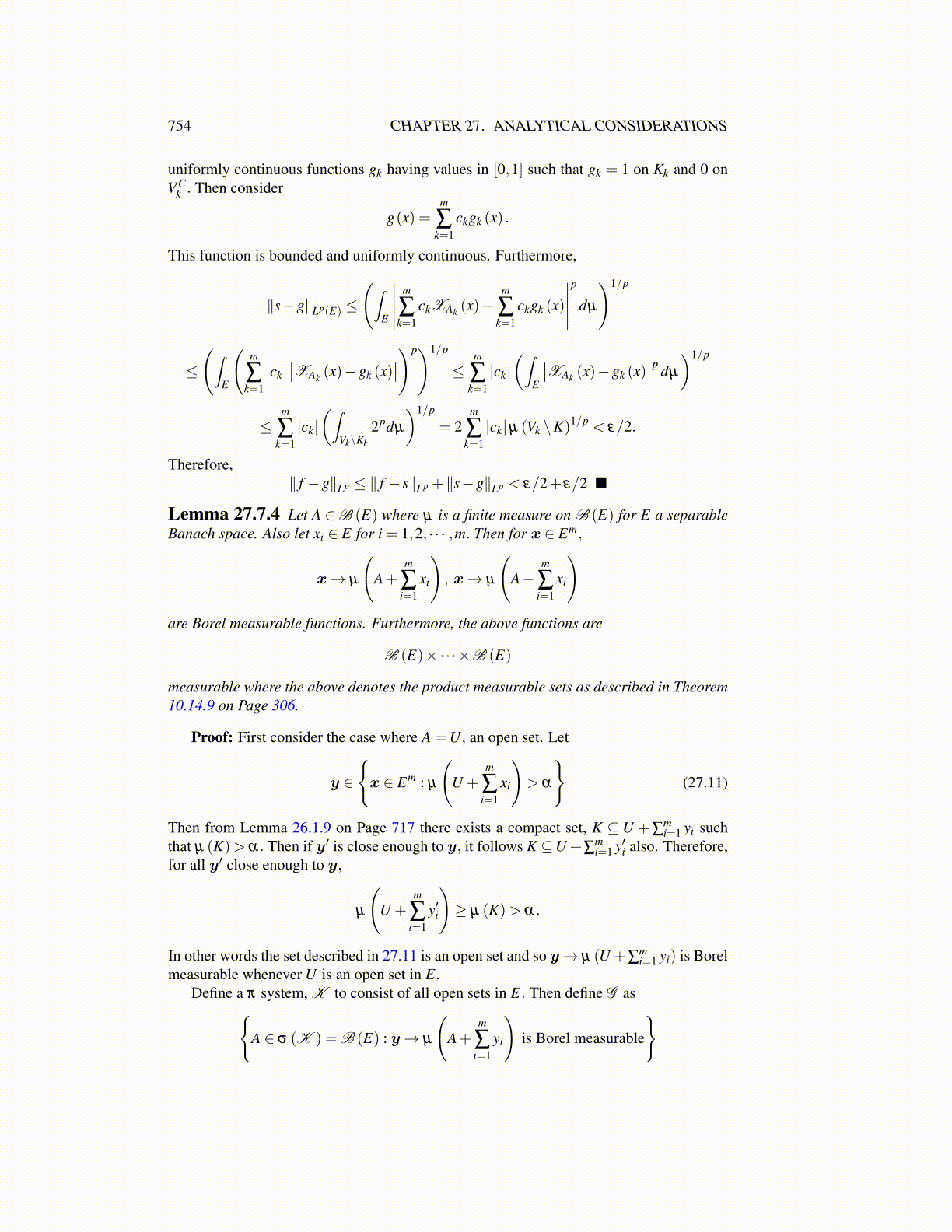
754 CHAPTER 27. ANALYTICAL CONSIDERATIONS
uniformly continuous functions gk having values in [0,1] such that gk = 1 on Kk and 0 onVC
k . Then consider
g(x) =m
∑k=1
ckgk (x) .
This function is bounded and uniformly continuous. Furthermore,
∥s−g∥Lp(E) ≤
(∫E
∣∣∣∣∣ m
∑k=1
ckXAk (x)−m
∑k=1
ckgk (x)
∣∣∣∣∣p
dµ
)1/p
≤
(∫E
(m
∑k=1|ck|∣∣XAk (x)−gk (x)
∣∣)p)1/p
≤m
∑k=1|ck|(∫
E
∣∣XAk (x)−gk (x)∣∣p dµ
)1/p
≤m
∑k=1|ck|(∫
Vk\Kk
2pdµ
)1/p
= 2m
∑k=1|ck|µ (Vk \K)1/p < ε/2.
Therefore,∥ f −g∥Lp ≤ ∥ f − s∥Lp +∥s−g∥Lp < ε/2+ ε/2 ■
Lemma 27.7.4 Let A ∈B (E) where µ is a finite measure on B (E) for E a separableBanach space. Also let xi ∈ E for i = 1,2, · · · ,m. Then for x ∈ Em,
x→ µ
(A+
m
∑i=1
xi
), x→ µ
(A−
m
∑i=1
xi
)are Borel measurable functions. Furthermore, the above functions are
B (E)×·· ·×B (E)
measurable where the above denotes the product measurable sets as described in Theorem10.14.9 on Page 306.
Proof: First consider the case where A =U, an open set. Let
y ∈
{x ∈ Em : µ
(U +
m
∑i=1
xi
)> α
}(27.11)
Then from Lemma 26.1.9 on Page 717 there exists a compact set, K ⊆U +∑mi=1 yi such
that µ (K)> α. Then if y′ is close enough to y, it follows K ⊆U +∑mi=1 y′i also. Therefore,
for all y′ close enough to y,
µ
(U +
m
∑i=1
y′i
)≥ µ (K)> α.
In other words the set described in 27.11 is an open set and so y→ µ (U +∑mi=1 yi) is Borel
measurable whenever U is an open set in E.Define a π system, K to consist of all open sets in E. Then define G as{
A ∈ σ (K ) = B (E) : y→ µ
(A+
m
∑i=1
yi
)is Borel measurable
}